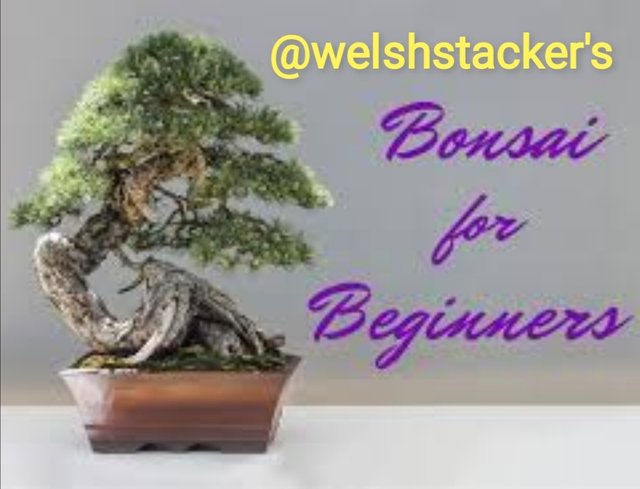
When I was young, I had always thought that Bonsai was a certain type of tree that, through genetics, remained small while still resembling a larger mature tree. As I progressed through life, I learned more and more about what bonsai is and what it takes to create it. And I have grown more interested and fascinated by the art form with the passing of every year.
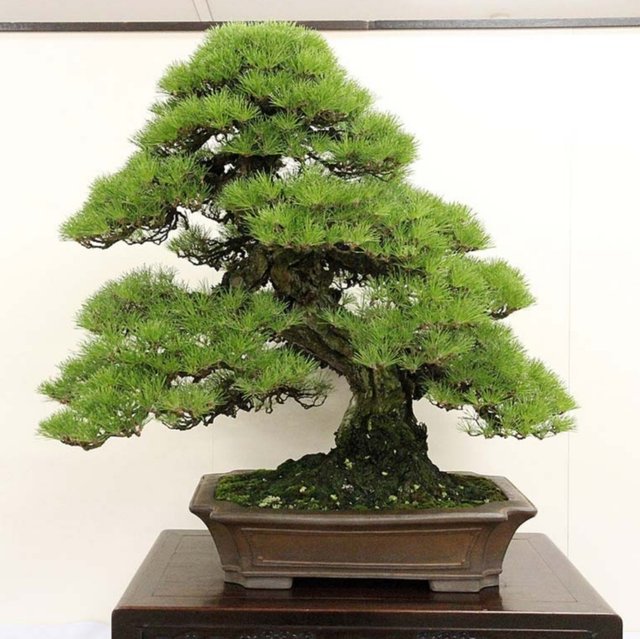
source
The word bonsai is a Japanese expression that literally translates to “tray planting.”
Bonsai is the art of growing certain trees and shrubs, of many varieties, in small, shallow containers. It is through careful and precise training and pruning, that the plant is slowly shaped and manipulated to give the appearance of an older, mature tree. The tree takes on a shape that is more in tune with how a tree would look growing out in nature. Training a growing tree or shrub into a desired shape over several years takes a calm patience, with every aspect being well thought out and every action precise and deliberate.
As a keen koi carp keeper (back in my younger days), my ornamental pond was decorated with all things "Japanese". From small stone pergolas, Japanese maples and of course Bonsai. This is where my interest in these works of art began. Now the pond is long gone, but my love of Bonsai still remains. Several species of plants are suitable for growing in the bonsai fashion, including citrus trees, jade plants, many fig trees, some pine trees, juniper trees and even culinary herbs such as rosemary and basil, just to name a few. The plants can be obtained in several ways. Most can be started from seed or cloned by rooting cuttings from a growing plant (not the easiest routes). I still find myself plucking the odd specimen straight from the ground and trying to create "Bonsai".
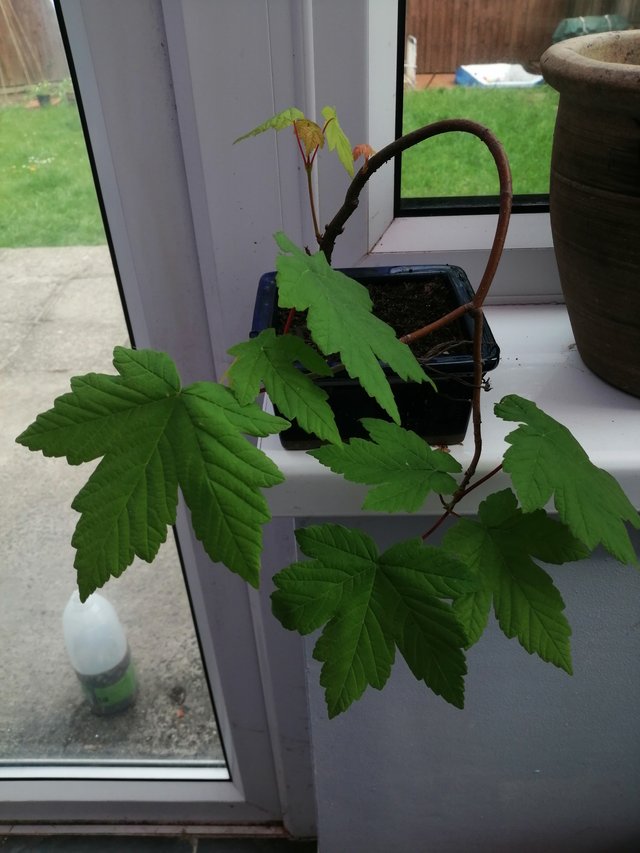
My 2yr old Sycamore (Acer pseudoplatanus)
Some of the most beautiful parts of plants usually remain buried, but there is a school of gardening that celebrates what we often never see
It is forever fascinating to me that human cultures tend to interpret nature in such dramatically different ways. Here in the UK, much of our gardening aesthetic is firmly fixated on flowers (the greater the number of petals and the more dazzling their colour the better). But in some east Asian societies, the focus is all about the amazing architecture of the parts of plants we usually don’t see....... Pssst! I'm talking about the roots.
One of the most revered schools of bonsai is the 'root over rock' style. A technique called nearai displays plants that have been removed from their containers and the soil carefully rinsed off specifically to reveal and accentuate the structure of their roots. Skilled horticulturists spend years trying to mimic how the roots of rugged mountain trees twist and turn over massive boulders, using specially selected stones and a plethora of ingenious techniques.
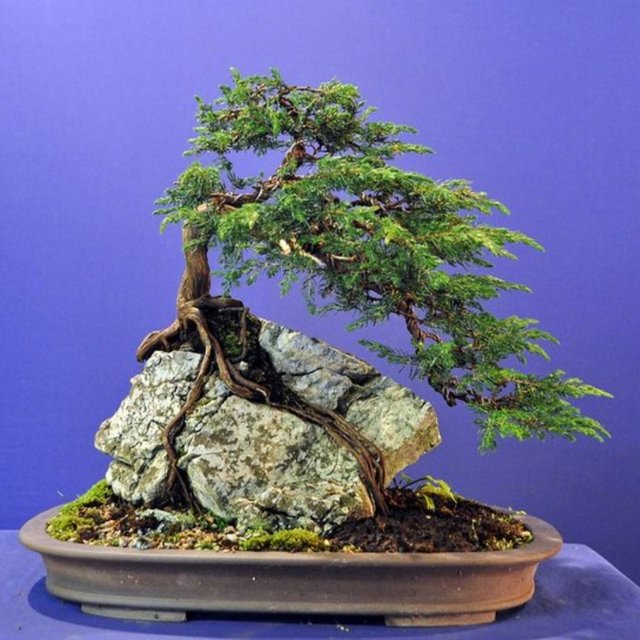
source
This style morphed dramatically when it hit Bali and Hawaii, using jungle species, such as strangler figs, that produce masses of aerial roots. I love the magical structure and form of “Fuku bonsai” or “Hawaiian bonsai”, which looks like something straight out of the Jungle Book crossed with Angkor Wat. These fast-growing tropical species will produce this effect swiftly, and starting out couldn’t be more simple, even for inhabitants of less idyllic climes.
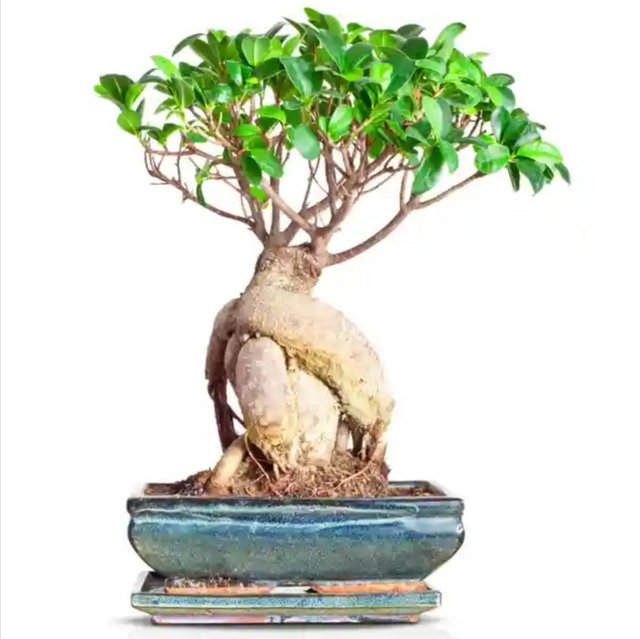
A young strangler fig
There are really just two simple rules to growing this exposed root bonsai:
First - only a few species produce these amazing twists and tassels of roots, the most common of which are the tropical figs. I am a particular fan of Ficus ‘Natasja’, a strangler fig cultivar whose unusually small leaves really help create a convincing sense of scale. The small-leaved Schefflera arboricola is another ideal candidate. These fast-growing species are some of the most affordable bonsai around. You can pick one up for less than £20 in any good garden centre or (in lockdown times) online.
Second rule: Wonder why you never see these specimens for sale covered in roots? That's because they only produce them in extremely humid conditions. We are talking at least 80% humidity (your average living room can be 40% or lower). But all you need to achieve this is a plastic cloche or, at a pinch, even a clear, upturned plastic bucket. Just place your little bonsai on a large tray or dish, spray it generously with water, then pop the cloche over and place it in a bright spot.
Within as little as a week, you will start to see tiny white roots emerging from all over the branches and trunks. In a matter of months these will create beautiful flowing stilts and buttresses. During this time the lid can be removed once a week or so for watering, pruning or training, just give the plant a generous water spritz after opening and before closing it up again. Once these turn brown and woody, your miniature Angkor Wat won’t need the cloche at all, turning a bog standard tiny tree into a true marvel of nature.
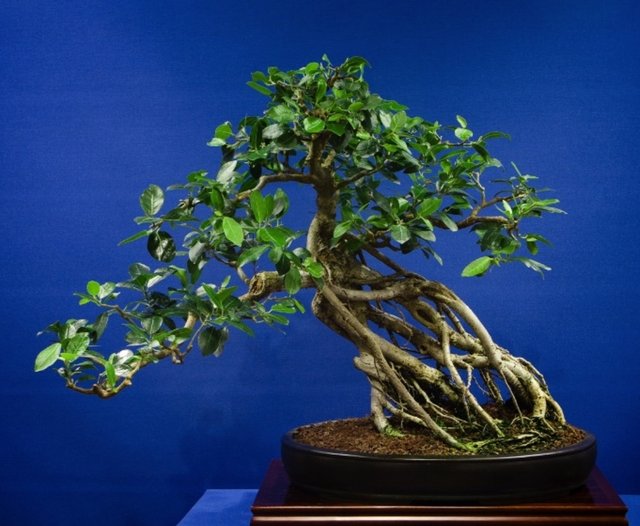
A strangler fig with exposed roots source
Creating bonsai is much different from growing an average run of the mill houseplant. It takes patience, dedication, foresight, creativity and care. However, this should never scare anyone away from trying it. As the years go by and the plant takes shape, the grower will find that the rewarding feeling that comes with it is more than worth the effort put in.
Good tips, thanks for posting. Hope you and your beautiful family are well and staying safe 🙏💐
Downvoting a post can decrease pending rewards and make it less visible. Common reasons:
Submit
Every article from you brings me more admiration for your work. Different themes and a clear way of writing. If I wore a hat, I would take it off to you.
!trdo
!COFFEEA
!BEER
Downvoting a post can decrease pending rewards and make it less visible. Common reasons:
Submit
Thanks for this. I just received my first Bonsai about two months ago for my 32nd birthday. Part of the tree seems to be in "fall mode" with wilting leaves. The other portion seems to be in "spring mode" with vibrant green leaves. What's up with that? Probably needs some pruning. :)
Downvoting a post can decrease pending rewards and make it less visible. Common reasons:
Submit
Very true, different cultures tend to interpret nature in dramatically different ways. I like the Japanese culture of simplicity and cleanliness (which are both virtues). Great article, dude! Do you have a bonsai plant? My tomato plant is starting to fruit, and Iam so excited about it!
Have a great weekend ahead! Hugs to 1/2 pint and 1/4 pint and best wishes to Mrs @welshatacker. 🥰🌺🤙
Downvoting a post can decrease pending rewards and make it less visible. Common reasons:
Submit
You got a 7.69% upvote from @votemypost Send any amount of Steem to @votemypost with your post link in the memo for a proportional upvote. Earn a passive income by delegating Steem Power to @votemypost
If you are looking to earn a passive no hassle return on your Steem Power, delegate your SP to @votemypost by clicking on one of the ready to
delegate links:
25SP | 50SP | 75SP | 100SP | 250SP | 500SP | 1000SP | 2500SP | 5000SP
Another Amount
You will earn 85% of the voting bot's earnings based on your delegated SP's prorated share of the bot's SP each day! You can also undelegate at anytime.
Downvoting a post can decrease pending rewards and make it less visible. Common reasons:
Submit
BonsaI!!!!!!
Downvoting a post can decrease pending rewards and make it less visible. Common reasons:
Submit
Did I mention my little Japanese Maple? Yes I did. BONSAI!
Downvoting a post can decrease pending rewards and make it less visible. Common reasons:
Submit
Did I mention my
Little Japanese Maple?
Yes I did. BONSAI!
- kerrislravenhill
I'm a bot. I detect haiku.
Downvoting a post can decrease pending rewards and make it less visible. Common reasons:
Submit
@welshstacker #OWNINGSTEEM
Downvoting a post can decrease pending rewards and make it less visible. Common reasons:
Submit
thank you, beautiful plant !
Downvoting a post can decrease pending rewards and make it less visible. Common reasons:
Submit